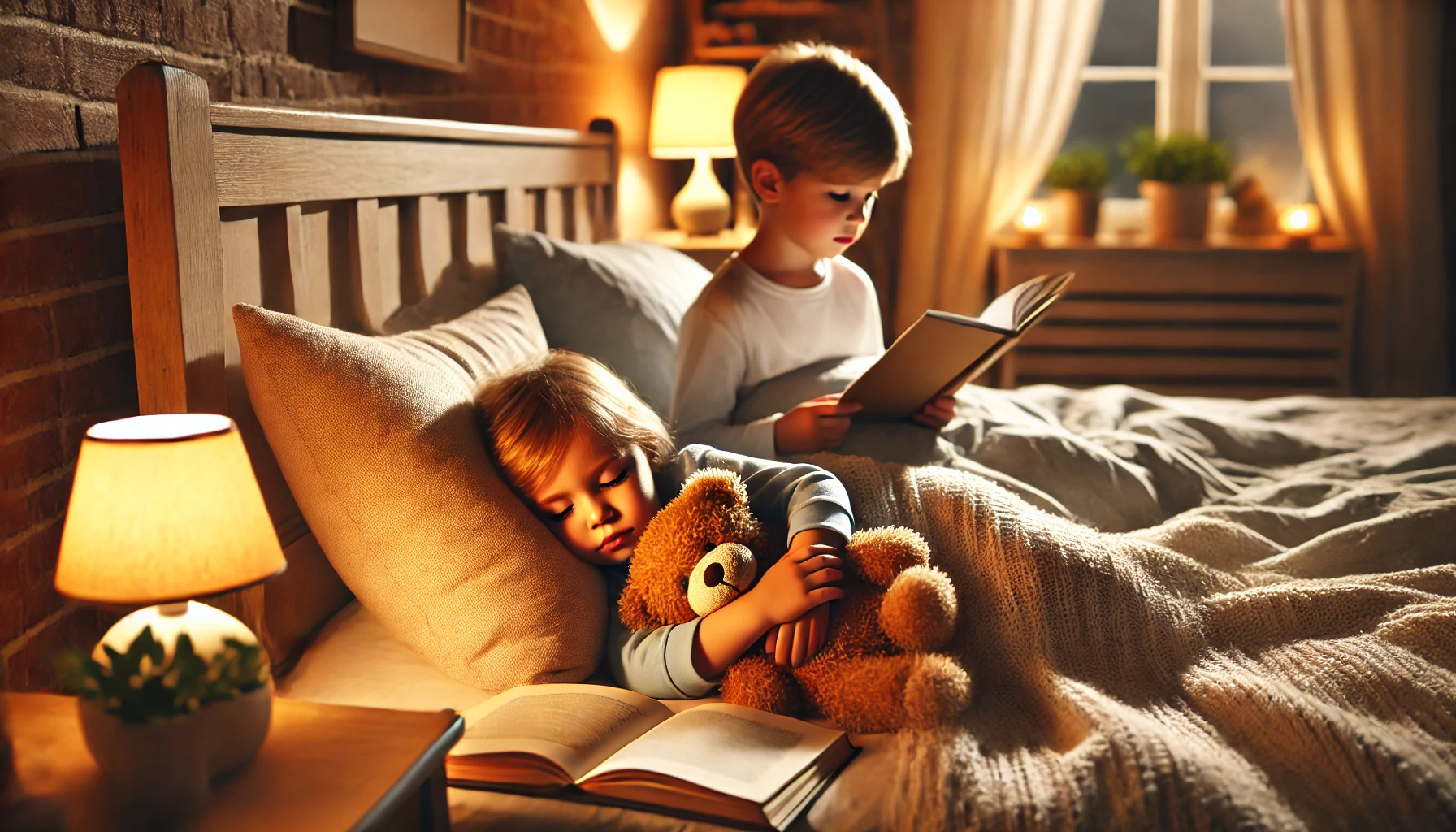How to Teach Young Children About Healthy Sleep Habits
Good sleep habits are essential for a child’s growth, brain development, and overall well-being. Teaching young children how to maintain a healthy sleep routine helps them feel well-rested, focused, and emotionally balanced. Parents can encourage good sleep habits through consistent bedtime routines, a comfortable sleep environment, and positive reinforcement. In this article, we’ll explore practical ways to help children develop healthy sleep habits at home.
Why Teaching Healthy Sleep Habits is Important
- Supports physical growth and development – Sleep helps the body grow and repair itself.
- Boosts brain function and learning – A well-rested child focuses better in school and play.
- Improves mood and emotional regulation – Sleep helps children manage emotions and stress.
- Strengthens the immune system – Good sleep supports overall health.
- Promotes long-term healthy habits – Teaches children the importance of rest and relaxation.
1. Establish a Consistent Bedtime Routine
A predictable routine helps children understand when it’s time to sleep.
Activity Idea:
- Create a calm and structured bedtime routine, such as:
- Taking a warm bath
- Brushing teeth
- Reading a bedtime story
- Saying goodnight and turning off the lights
- Use a bedtime chart with pictures to remind children of each step.
What Kids Learn:
- How routines signal the body to prepare for sleep
- That consistency makes bedtime easier
- The importance of self-care before bed
2. Set a Regular Sleep Schedule
Going to bed and waking up at the same time each day helps regulate sleep patterns.
Activity Idea:
- Set a fixed bedtime and wake-up time, even on weekends.
- Use a gentle alarm clock to wake up at the same time every morning.
- Explain why sleep schedules help the body feel rested and energized.
What Kids Learn:
- That sleep is a daily necessity
- How schedules create better energy and mood
- The importance of a steady routine for feeling well-rested
3. Create a Comfortable Sleep Environment
A cozy and relaxing bedroom helps children fall asleep faster and stay asleep.
Activity Idea:
- Ensure the room is dark, quiet, and cool for better sleep.
- Use a nightlight if a child is afraid of the dark.
- Let children choose a favorite stuffed animal or blanket for comfort.
What Kids Learn:
- How the environment affects sleep quality
- The importance of making their sleep space cozy
- That feeling safe and comfortable promotes better rest
4. Limit Screen Time Before Bed
Blue light from screens can make it harder for children to fall asleep.
Activity Idea:
- Set a “no screens” rule at least one hour before bedtime.
- Encourage quiet, screen-free activities like coloring or storytelling.
- Use a special reading time before bed instead of watching TV.
What Kids Learn:
- That screens can interfere with sleep
- How to enjoy relaxing activities instead of electronics
- The benefits of winding down before bedtime
5. Encourage Relaxation Techniques
Teaching children to relax before bed helps them fall asleep more easily.
Activity Idea:
- Practice deep breathing exercises: “Breathe in slowly like smelling a flower, then breathe out like blowing out a candle.”
- Try gentle stretching or yoga for kids before bedtime.
- Use soft music or white noise to create a calming atmosphere.
What Kids Learn:
- How to calm their minds and bodies before sleep
- Techniques for managing stress and restlessness
- That relaxation is an important part of bedtime
6. Avoid Sugary Snacks and Caffeine Before Bed
Food and drinks can affect sleep quality, so healthy choices are important.
Activity Idea:
- Offer a light bedtime snack, like a banana or warm milk.
- Avoid sugary treats like candy or chocolate before bed.
- Talk about how some foods help with sleep while others make it harder.
What Kids Learn:
- The connection between food and sleep quality
- How to make healthy choices for better rest
- That avoiding sugar before bed leads to better sleep
7. Teach the Importance of Sleep Through Books and Stories
Reading about sleep helps children understand why it is necessary.
Activity Idea:
- Read books like Goodnight Moon or The Going to Bed Book.
- After reading, discuss why the characters go to sleep.
- Ask, “How do you feel after a good night’s sleep?”
What Kids Learn:
- The importance of sleep for health and happiness
- That bedtime routines are common for everyone
- How to develop a love for winding down with stories
8. Be Patient and Consistent
Adjusting to a new sleep routine takes time, so patience is key.
Activity Idea:
- If a child resists bedtime, remind them: “Your body needs rest to grow and feel great!”
- Praise children for following their bedtime routine.
- Keep bedtime positive and stress-free with calm encouragement.
What Kids Learn:
- That sleep habits take practice
- How consistency improves sleep quality
- The long-term benefits of good rest
Final Thoughts
Teaching young children about healthy sleep habits helps them develop strong routines, better focus, and emotional well-being. By setting consistent schedules, creating a relaxing environment, and encouraging positive bedtime habits, parents can help children build a foundation for lifelong good sleep.
